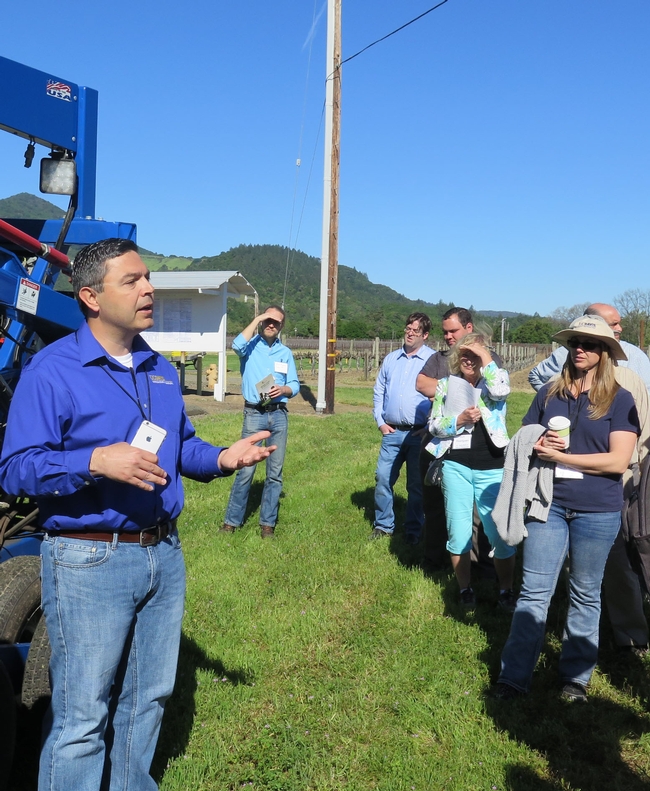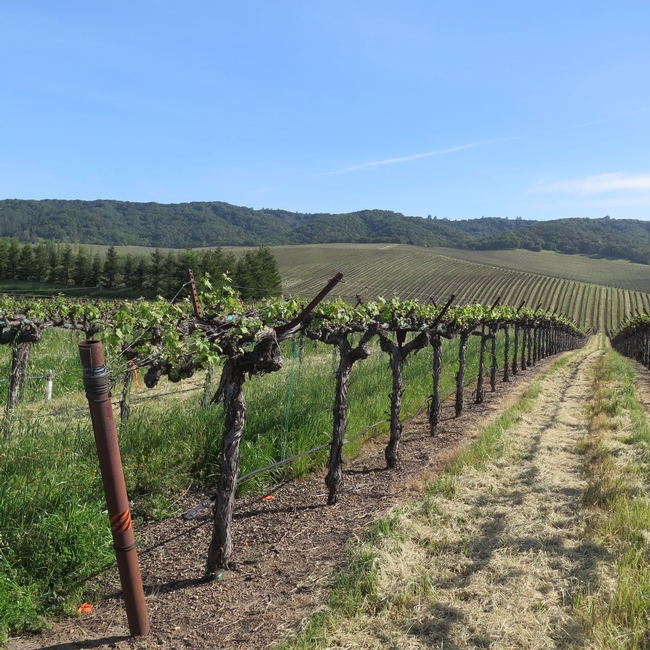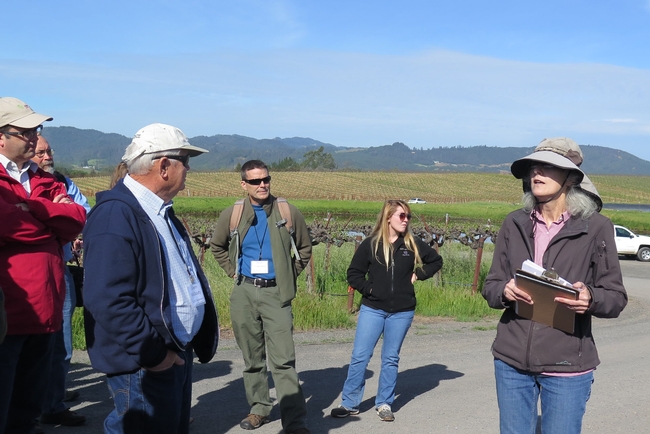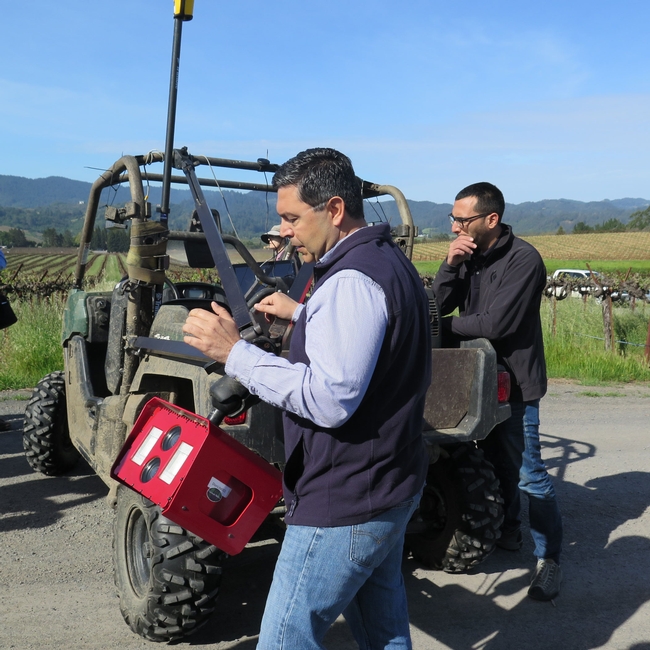Dr. Kurtural addresses the NVEELC group at Oakville Station.
The meeting highlight for me was a tour co-organized by Rhonda Smith, UCCE-Sloping vineyards, common in California, often have conditions resulting in non-uniform fruit maturity.
Rhonda Smith, UCCE Viticulture Advisor in Sonoma County, at the E&J Gallo Frei Ranch
Luca Brillante demonstrates the ATV mounted NDVI and GPS-camera sensors.
With all of the UAV (i.e. drone) and sensor craze lately, NDVI mapping may not seem like such a big deal. But Kurtural warned of the lack of "ground truthing" with NDVI flyover information-a critical component of understanding NDVI generated data. Another catch is that the sensors need to be "trained", that is, the scale for which the data they are generating needs to be calibrated to be meaningful. For the camera that is generating crop load information, occlusions are another hurtle for the Kurtural team. Counting clusters is not a good enough predictor of yield, rather, Kurtural and Brillante with their proximal sensing ATV
Additionally, the Kurtural lab is studying the genetic pathway for anthocyanin (color) development in berries. With this information, the timing of applied water stress can be targeted for key times in color development. This is also important for the table grape industry, where similar studies are being conducted.
The wave of the future? Clearly, "smart" farming is nearly here. UCCE is on the cutting edge of technology to manage our precious resources, save labor, and produce a premium crop.




